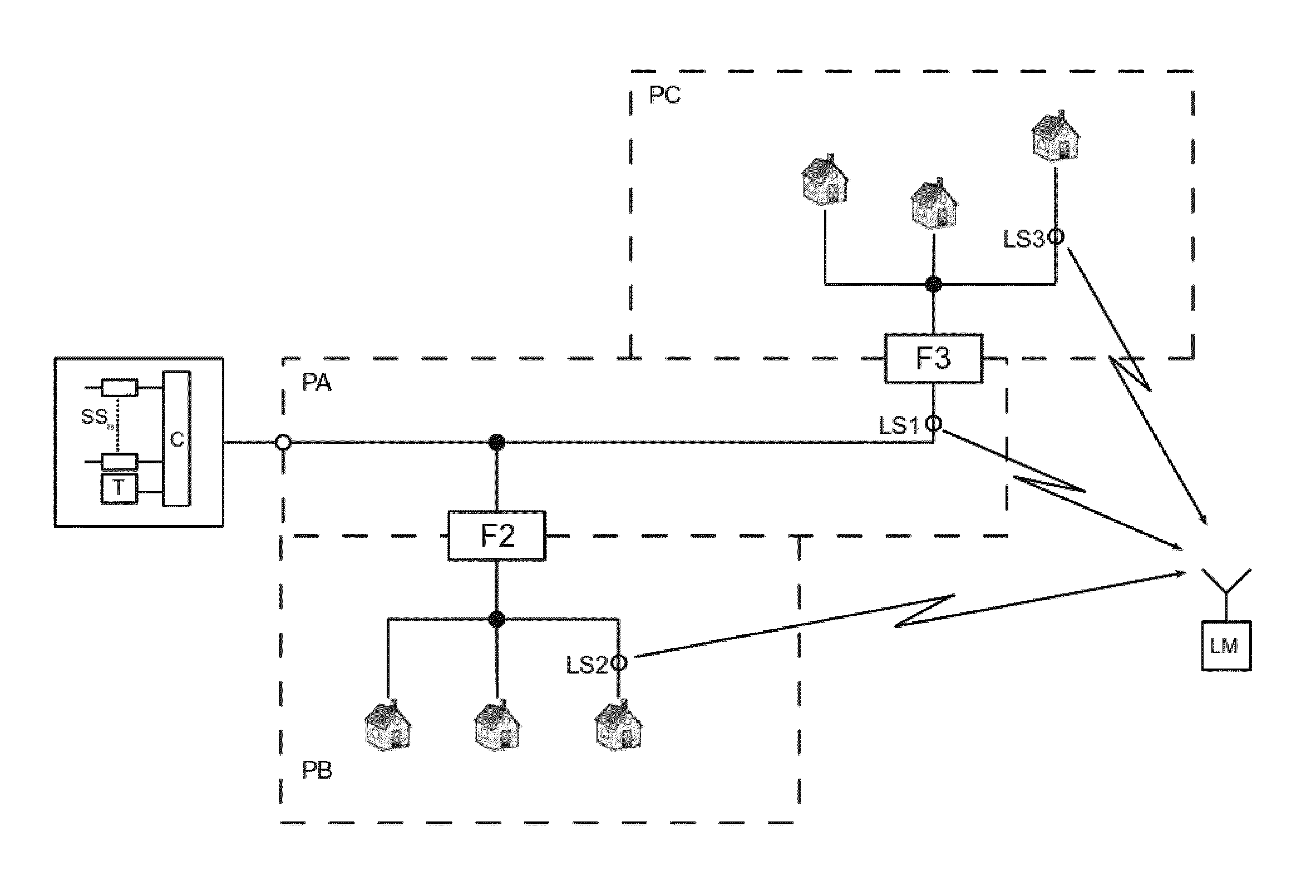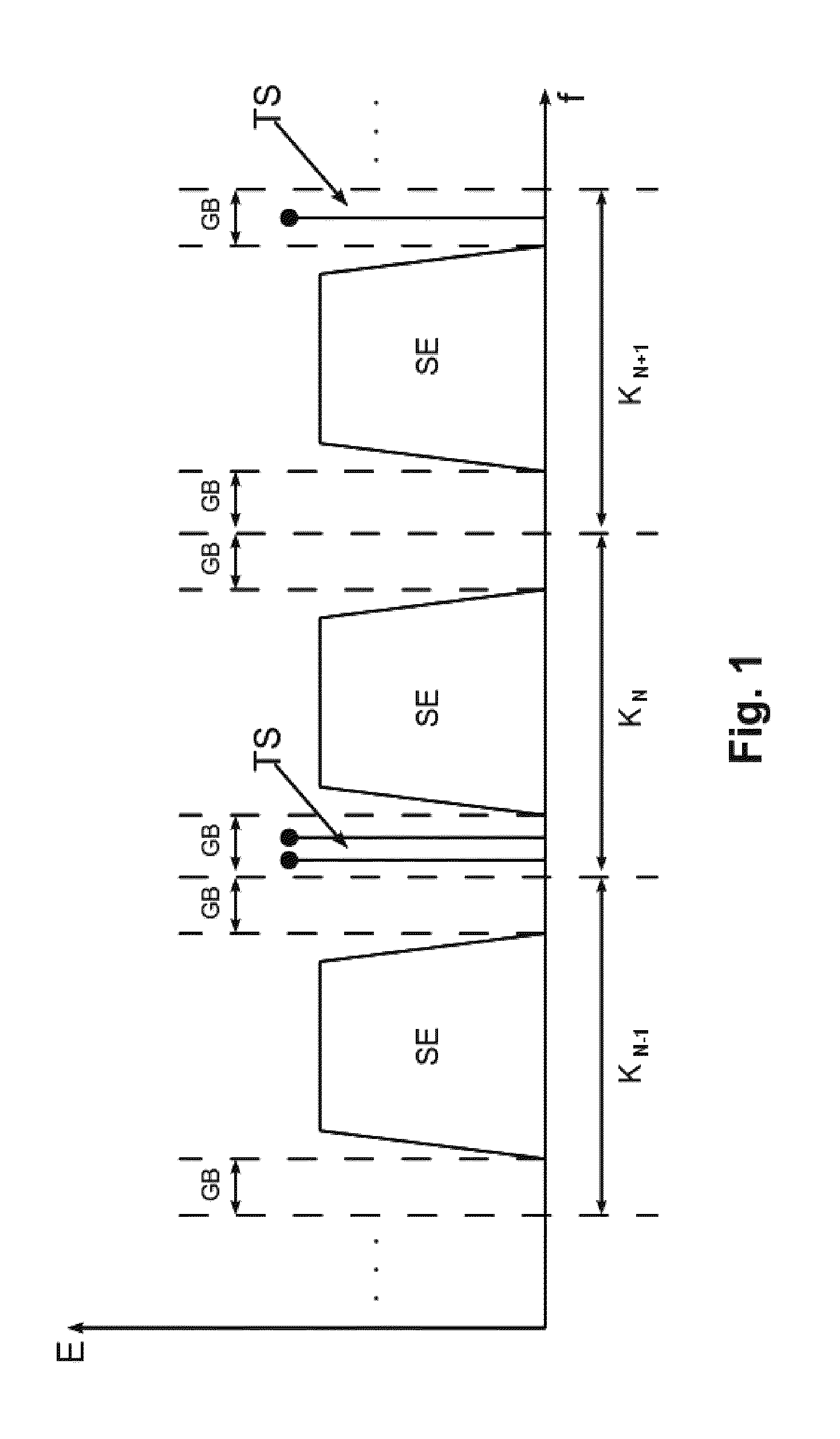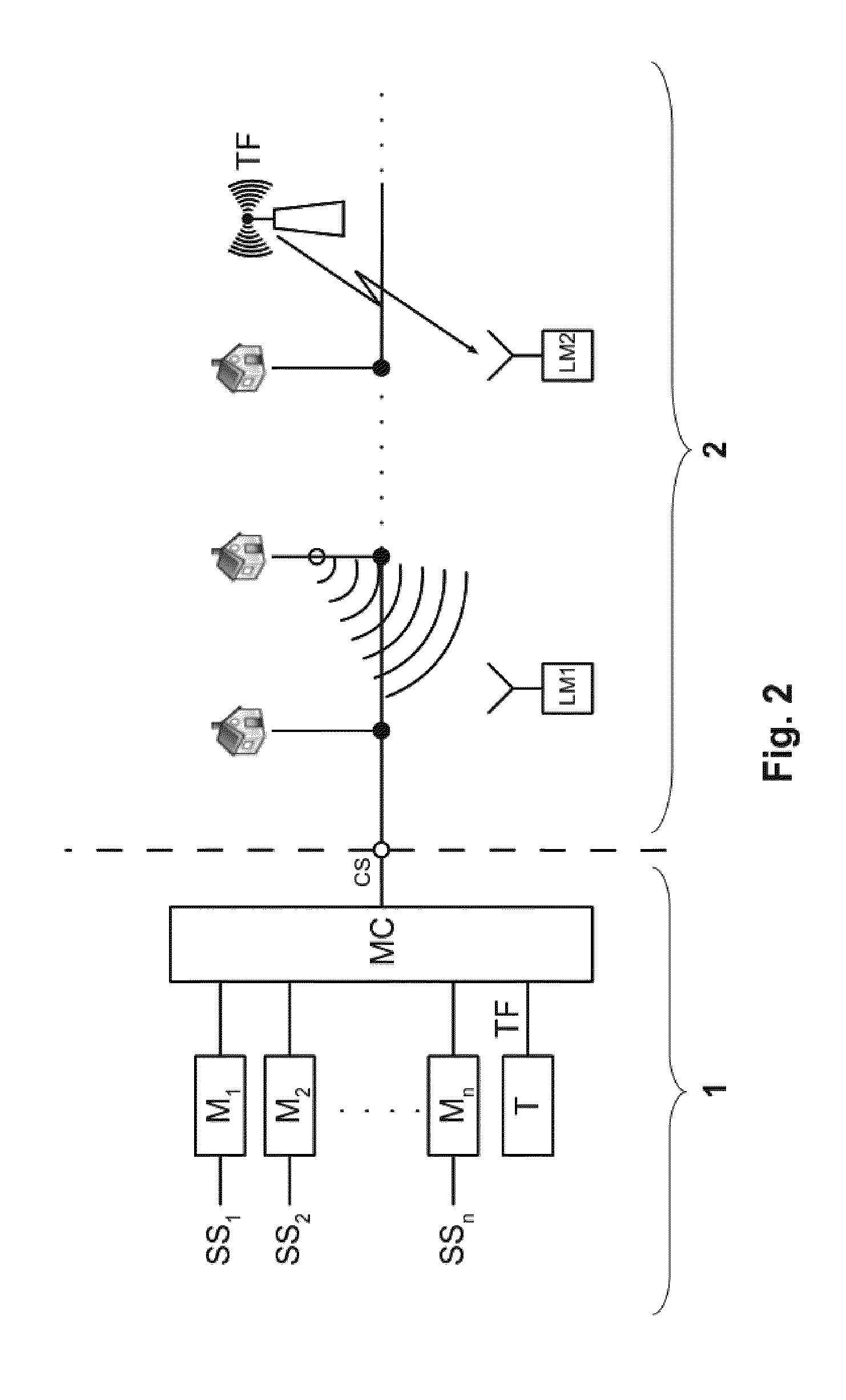Method of tagging signals used for leakage detection and measurement in cable television networks and apparatus for detection and/or measurement of leakage sources tagged with this method
a technology of tagging signals and cable television networks, which is applied in the direction of electrical equipment, two-way working systems, television systems, etc., can solve problems such as signal leakage, equipment malfunction, and catv operators, and achieve the effect of simplifying the absolute magnitude measurement, minimizing the bandwidth occupied by the signal, and minimizing the level of the side bands
- Summary
- Abstract
- Description
- Claims
- Application Information
AI Technical Summary
Benefits of technology
Problems solved by technology
Method used
Image
Examples
Embodiment Construction
[0032]The energy E distribution in terms of frequency f, typical for digital modulations used in CATV networks, is shown in FIG. 1. The useful signal energy SE is equally distributed almost over the entire CATV channel bandwidth (FIG. 1 shows three consecutive channels KN−1, KN, KN+1. The guard band GB does not contain energy useful for service transmission. The tagging signal TS is introduced into this part of the spectrum by combining it with all signals in the headend.
[0033]A typical CATV system shown in FIG. 2 consists of two parts. A complex CATV signal is prepared in the headend 1 for transmission to subscribers in the distribution network 2. The service sources SS1-SSn (TV, radio, video, data, etc.) are coupled to the input ports of the respective channel modulators (M1-Mn), which include carrier frequency generators. The modulators M modulate the service signals into channels for placement in the CATV network. The outputs of the channel modulators M are then coupled to the m...
PUM
 Login to View More
Login to View More Abstract
Description
Claims
Application Information
 Login to View More
Login to View More - R&D
- Intellectual Property
- Life Sciences
- Materials
- Tech Scout
- Unparalleled Data Quality
- Higher Quality Content
- 60% Fewer Hallucinations
Browse by: Latest US Patents, China's latest patents, Technical Efficacy Thesaurus, Application Domain, Technology Topic, Popular Technical Reports.
© 2025 PatSnap. All rights reserved.Legal|Privacy policy|Modern Slavery Act Transparency Statement|Sitemap|About US| Contact US: help@patsnap.com



